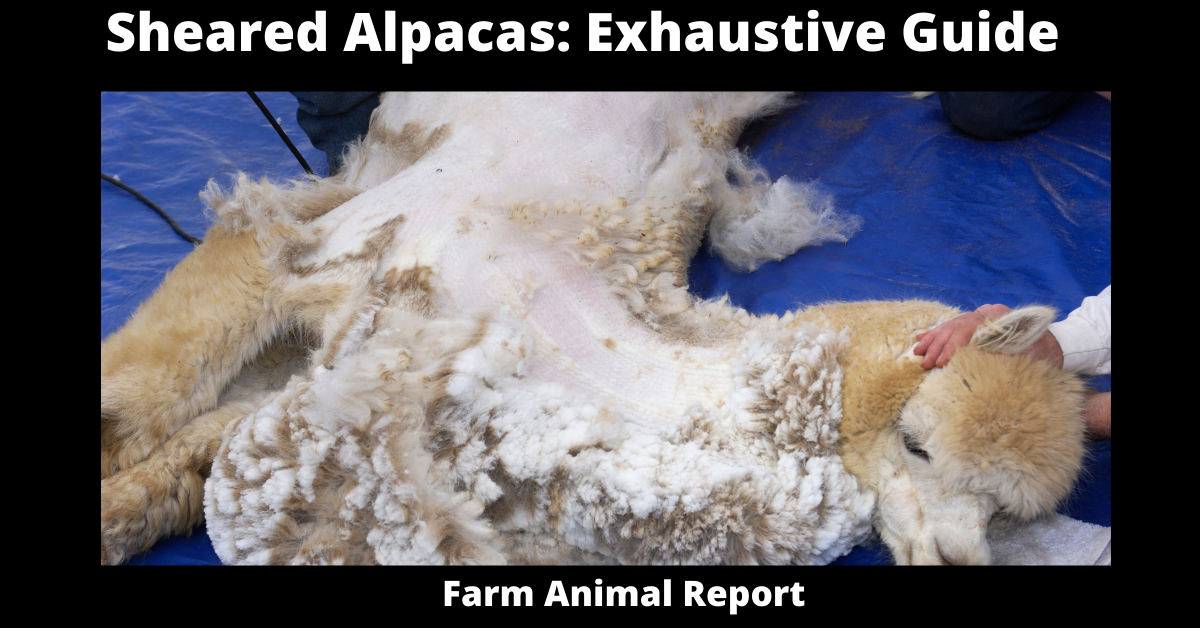Do Alpacas Need to Be Sheared – As a general rule Alpaca shearing is a skilled profession. Fiber, wool from the alpacas are sheared then it is processed, and then manufactured into garments and clothing. Shearing alpacas should occur at least once a year. You can save money by shearing your sheep. This would necessitate the purchase of high-quality shearing equipment, which may cost around $100 – $400. However, if you choose to have your alpacas sheared professionally, the cost will likely be approximately $50 – $90 per animal.
Do Alpacas Need to Be Sheared
Sheared Alpacas – Alpacas, like llamas, guanacos, and vicuas, are camelids native to the New World. They are essential in South America, particularly in Peru, where they have been kept and bred for thousands of years for their wool. Alpaca breeding, on the other hand, is relatively uncommon in Europe. However, the number of animals and breeders has been increasing steadily over the years. Alpacas, like sheep, must be shorn regularly to harvest their wool.
Check Out Amazon’s Educational Resources for Raising Alpacas
The procedure is novel to the animals and thus causes stress. For the first time, researchers from Vetmeduni Vienna have investigated which shearing position causes the least stress to the animals and thus represents the least stressful method from the animal’s perspective.
Unlike sheep, which are typically turned onto their backs, alpaca breeders employ various restraint methods. Assistants either hold the animals in a standing position, restrain them on a ground mattress, or place them on unique shearing tables. Previously, no studies had been conducted to determine which method caused the minor stress in the animals.
“Stress levels in animals can be determined using clinical parameters, by observing their behavior, or by analyzing their saliva and feces in the laboratory,” explains senior author Susanne Waiblinger of the Institute of Animal Husbandry and Animal Welfare. Cortisol is a stress hormone found in saliva and feces.
Saliva cortisol reflects a brief stress response, whereas fecal cortisol reflects a more prolonged stress response. Apart from stress hormone levels, the researchers examined clinical parameters such as heart rate, respiratory rate, body temperature, and the animals’ behavior.
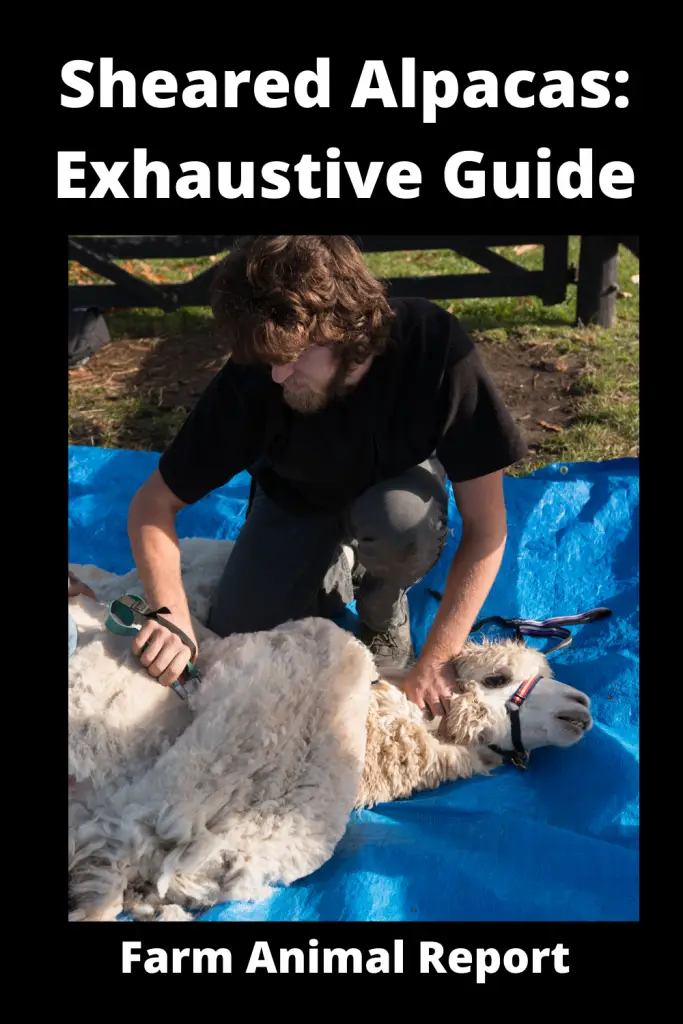
Is it Cruel to Shear an Alpaca?
Alpaca Shearing is not cruel; it is necessary for the animal’s safety and welfare. Alpacas, unlike dogs and cats, do not shed their fur. They must be sheared on an annual basis to ensure their health and welfare. Not shearing them is cruel, as they are incapable of coping with the summer heat. Without regular shearing, an alpaca becomes matted and unmanageable.
18 ways Alpaca Farmers make Money
Alpacas are not harmed during the Shearing process. It’s healthier for them, in the long run, to avoid overheating during the summer and to trim the hair that occasionally obscures their eyes and obstructs their view. Trimming their toenails and teeth is also a beneficial practice for them. Thus, while it may be stressful for them, it is not harmful, and the long-term benefits are difficult to deny.
A widespread misconception about shearing animals is that it causes them pain, and some would argue that we should avoid shearing them entirely. Shearing alpacas every year is not only beneficial to them but critical to their health and well-being. Shearing enables them to stay cool in the summer and time to regrow their coats in preparation for the winter. While shearing may not be their preferred activity, it is an integral part of caring for these magnificent creatures.
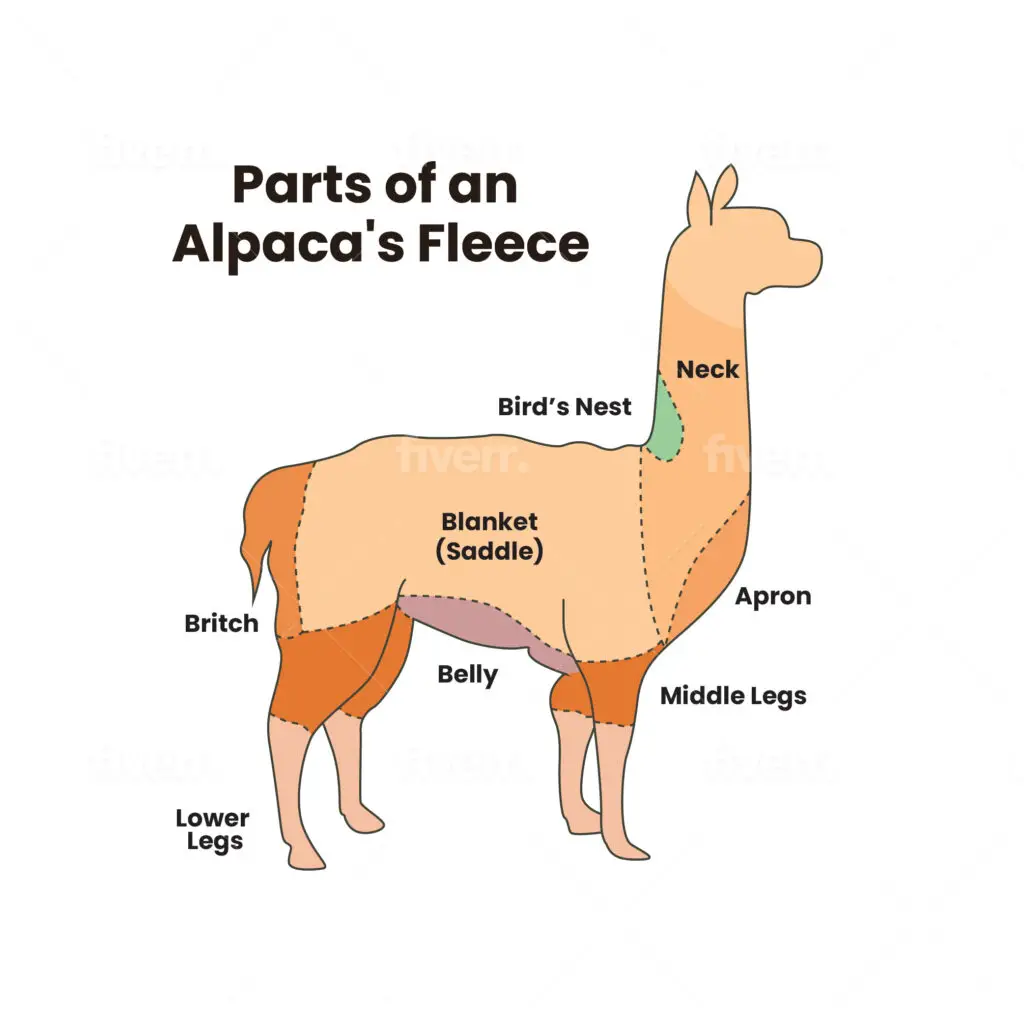
When Should Alpacas be Sheared
All fiber animals require regular shearing. It helps keep the animals cool during the summer and reduces the risk of flystrike, an infection of the creature’s nether regions by blowfly maggots. It enables alpaca owners to thoroughly examine an animal’s body without fur and determine if anything is wrong. It allows us to examine their skin for parasites or mites and also simplifies their treatment.
Alpacas are hardy creatures bred for their luxurious, warm wool. Originating in South America’s Andes Mountains, they are accustomed to dry summers and cold winters. They may become ill or have difficulty reproducing in humid climates. Maintaining an eye on the temperature and humidity levels in your area can assist you in determining the optimal time to shear your alpacas to keep them comfortable and healthy.
How Much Does it Cost to Shear an Alpaca
Hey there, alpaca enthusiasts! 🦙 Whether you’re a seasoned alpaca owner or a newbie considering getting into the alpaca game, one thing you’ve probably wondered about is shearing. Yup, that luxurious alpaca fleece doesn’t harvest itself! So let’s break down the nitty-gritty of what it costs, how long it takes, and the value you can expect from that gorgeous fleece. Here’s a handy table to give you all the details:
| Aspect | Information |
|---|---|
| Cost to Get it Sheared (Professional Service) | Prices can range from $25 to $50 per alpaca. This usually includes the shearing and basic cleanup. Some professionals may charge extra for travel or additional services like toenail trimming. |
| Cost of Shears (DIY) | Good quality electric shears can run between $200 and $400. Manual shears are cheaper, costing around $20 to $50, but they’ll require more effort and time. |
| How Long It Takes to Shear | For professionals, it can take as little as 20 to 30 minutes per alpaca. If you’re doing it yourself and you’re inexperienced, set aside at least 1-2 hours to be safe. |
| Frequency of Shearing | Most alpacas need to be sheared once a year, typically in the spring. Some might require a light shearing in the fall, but that’s usually not the norm. |
| Value of Alpaca Wool | The fleece from one alpaca can sell for $50 to $90, depending on the quality. Finer, softer fleece usually fetches a higher price. |
Remember, shearing is not just about collecting that fabulous fleece; it’s also crucial for the alpaca’s well-being. Overgrown fleece can lead to overheating, limited mobility, and other health issues. So, whether you’re going DIY or bringing in the pros, make sure you’ve got your alpacas’ best interests at heart.
Happy shearing! 🦙✂️
Shearing Schedule
Each spring, shear your alpacas. This alpaca shearing schedule enables them to have short wool in the heat of the summer and long wool in the winter. Consider the heat and humidity levels in your area when determining the optimal time to shear in the spring. If April is a typically hot month in your area, schedule your shearing early. If you require professional shearers, schedule your appointment in advance, as other customers will be scheduling their shearing simultaneously.
Schedule Basis
Shearing schedules are determined by how well your alpacas tolerate the weather. They thrive in moderate dry heat and extreme cold, which is typical of the Andes Mountains, but alpacas are now found worldwide. They are found in both hemispheres, on continents such as North America, Australia, and Europe. Shearing in the spring helps the alpaca regulate its temperature in areas with humid summers and rainy winters.
Heat stress
Alpacas, like humans, rely on sweat to stay cool in extreme heat. Even if you have recently sheared your alpacas, their sweat will not evaporate quickly in the humid air. As a result, your alpacas may become overheated. Calculate this risk by multiplying the forecast temperature and humidity percentages. For instance, a forecast temperature of 90 degrees and relative humidity of 45 percent results in a heat index of 135 degrees. Your alpacas may become overheated if the heat index exceeds 120.
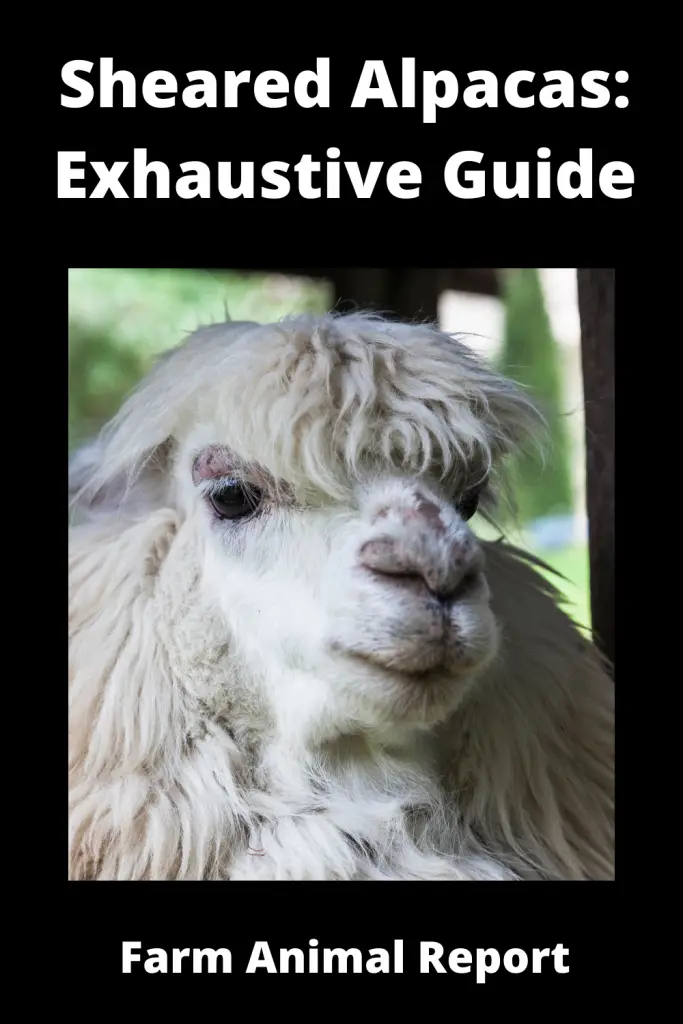
Cold Stress
Shearing in the spring allows your alpacas to regenerate their wool for the winter. When winter arrives, you want her to have a long, luxurious coat made of alpaca wool to keep her warm and protected from the wind. The semi-hollow fibers of wool trap heat close to the body. Additionally, they wick away moisture from the body, keeping the animals dry and warm.
Do Alpacas like being Sheared?
Alpacas, a New World camelid species, have highly dense wool. This requires them to be shorn regularly, similar to sheep. However, shearing causes stress to the animals.
How Often are Alpaca Sheared?
Alpacas are sheared once a year, typically before the end of July. Unlike sheep, they generally are sheared lying on their side rather than sitting on their rump. Alpacas must be sheared on an annual basis. If the fleece is not sheared, it will continue to grow for several years, causing distress. Occasionally, some Suri alpacas are allowed to grow a two-year fleece on purpose, but their welfare – particularly in hot weather – requires special consideration.
Shearing Guide
Pre-Shearing
Protect alpacas from vegetation and contamination caused by topped paddocks, bonfire ash, and rain. Consider the layout and flow of the shearing area to maximize efficiency and minimize stress on the alpacas. The shearing area should be completely solid, smooth, and debris-free. Restrict access to the area to children and pets and conduct a risk assessment of potential hazards. Decide whether you’re going to skirt and class as you go or bagging and storing the fleeces. If possible, mechanical cleaning should be used to avoid cross-fiber contamination.
Avoid the use of blowers. Assemble all necessary equipment, such as marker pens, poly bags, bins, bale bags, fiber sample bags, and pre-printed labels. Assemble a supply of paper towels to mop up spit or urine, as well as a wound spray and fly spray. Have you arranged for sufficient human assistance? Human assistance will require beverages, snacks, lunch, and access to a toilet and handwashing facilities.
Shearing Day
While owners and shearers employ various techniques, the majority of alpacas will be sheared using a restraint method. Shearing tables that secure the alpaca standing and then maneuver it into a lying position. Most alpacas will be restrained using a traditional rope harness that secures the alpaca to a ground mat. Shear alpacas in order of color, from white to black, and from young to old.
This will assist in avoiding cross-contamination and reducing the amount of clearing up between alpaca. Never pack the entire fleece in a single bag. Wrap the blanket in a bag and the neck in another. Between color changes, a thorough cleaning is required. Maintain a calm and respectful demeanor toward the alpacas and reintroduce them to their group as soon as possible. This is an excellent time to trim toenails and check dentition. Due to the loss of its thermal blanket, a shorn alpaca may require shelter during inclement weather.
How much does it Cost to Shear an Alpaca?
Shearing alpacas should occur at least once a year. You can save money by shearing your sheep. This would necessitate the purchase of high-quality shearing equipment, which may cost around $100. However, if you choose to have your alpacas sheared professionally, the cost will likely be approximately $35 per animal.
Do Alpacas Get Cold after Shearing?
As with sheep, alpacas must be sheared regularly to keep them happy and healthy and avoid overheating and parasite infections. Additionally, shorter fur makes it easier to assess the animal’s overall health.
It is critical to wait for favorable weather conditions to avoid distress and discomfort. Consider wearing a fur coat one day and your underwear the next – you would notice the difference, and alpacas do as well! Indeed, they can succumb to hypothermia if shorn in cold, wet, windy, or changing weather. They are typically sheared once a year in late spring or early summer in this country, giving them time to grow a new, snug coat before winter sets in.
It is preferable to shear indoors, where the temperature can be controlled. Keep blankets and bedding on hand in case they become cold. Shearing injuries should be treated immediately to avoid infection and keep an eye out for flystrike, a painful and sometimes fatal infection caused by flies laying eggs on the animal, hatch into larvae that feed on its flesh. It is uncommon in alpacas due to their incredibly dense fur, but it is worth keeping an eye out for just in case.
Alpacas dislike haircuts, so maintain a calm and stress-free environment with adequate lighting and clean pens. Your shearer will play a critical role in establishing proper bio-security procedures, including disinfecting tools and equipment.
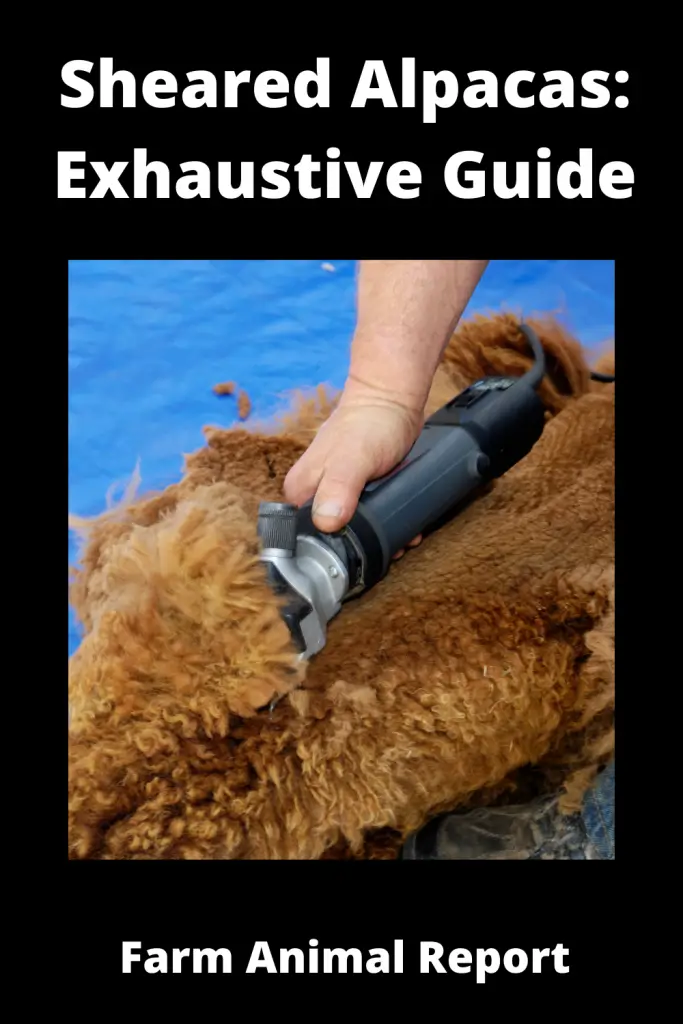
What do you do with Alpaca Fleece after Alpaca Shearing?
You may be wondering why there is such a fuss about alpaca fiber at this point. And you are correct in casting doubt on this process. We tend to treat alpaca fiber as if it were gold because it is the farm’s harvest.
Alpaca fiber does not enjoy the level of demand it deserves in the United States, primarily because most Americans are unaware of its value. However, I’m hoping that the world’s renewed interest in alpacas and llamas will help more Americans appreciate the importance of this magnificent wool. This is what makes alpaca fiber so unique and costly:
- It’s hypoallergenic, which means that it’s suitable for people like me who are allergic to traditional wool. Alpaca fiber does not contain the same amount of lanolin as wool, which is why I am allergic to it.
- Alpaca fiber is warm, and in fact, more generous than wool.
- Alpaca fiber is incredibly soft and has a high comfort factor, making it an excellent choice for clothing. Our industry pays close attention to this metric, and the highest-ranked and most expensive alpacas will have the highest comfort ratings.
- Alpaca fiber is naturally water repellent.
- Alpaca fiber is naturally resistant to flames.
- Alpaca is the epitome of eco-friendly fiber. Alpacas are gentle on the earth and consume little food, making them a genuinely sustainable fiber producer.
What to Do With Your Alpaca Fiber after Alpaca Shearing
Alpaca fiber is also highly versatile, which contributes to its growing global demand. When alpaca fiber is extracted, it is classified into three types:
- The first category is referred to as prime or firsts. This is the finest fiber available and is derived from the alpaca’s back and sides.
- The second category is referred to as seconds. It originates in the chest, neck, and abdomen.
- The third (and final) group consists of the legs and feet. Additionally, it is the dirtiest and roughest fiber.
Each group of fiber has a purpose and can be used in a variety of things:
- Prime blanket: Yarn, clothing, blankets
- Seconds and thirds: Dryer balls, felting, rugs, animal beds, cat toys, nesting balls for birds, etc.
Options for processing your alpaca fiber:
- Fiber Co-ops: You send in your fiber and receive money or credits to buy finished products.
- Micro Mills: These are small local mills that will make yarn, batting, roving, and felt.
- Large Mills: These mills will make yarn, yarn blends, or finished goods.
- Hand Processing: This would require you to process the fiber through skirting, washing, picking, carding, and spinning.
Not to worry if you are not crafty and find that last item unappealing. I am not crafty and would have no idea how to make my yarn or knit socks.
Still Learning – 18 Ways to make Money Alpaca Farming
Extra Things to Know
A few final points to consider regarding shearing if you are starting or expanding an alpaca farm in the United States:
- There are few shearing teams in the United States, so do your research and seek referrals to get started.
- Scheduling is difficult, so plan and schedule your shearing months in advance.
- The wind was challenging to work with, so if at all possible, choose an indoor location. We were unaware that the wind would be that strong (see above video), or else we would have made alternate arrangements.
- Biosecurity is critical, so choose a shearing team that follows quality standards and industry best practices when cleaning clothing, boots, and equipment between farms.
- Shearing costs approximately $30-50 per alpaca plus a $100 setup fee. Allow for this in your budget, as it is a non-negotiable expense in any farm business plan.
- Additionally, you’ll need cash on hand to tip the shearing team. The tip would grow in size in proportion to the size of your herd and the amount of time they spent on your farm.
- Shearing teams work long hours, so provide them with food. This year, I baked lasagna for our team and sent it with them.
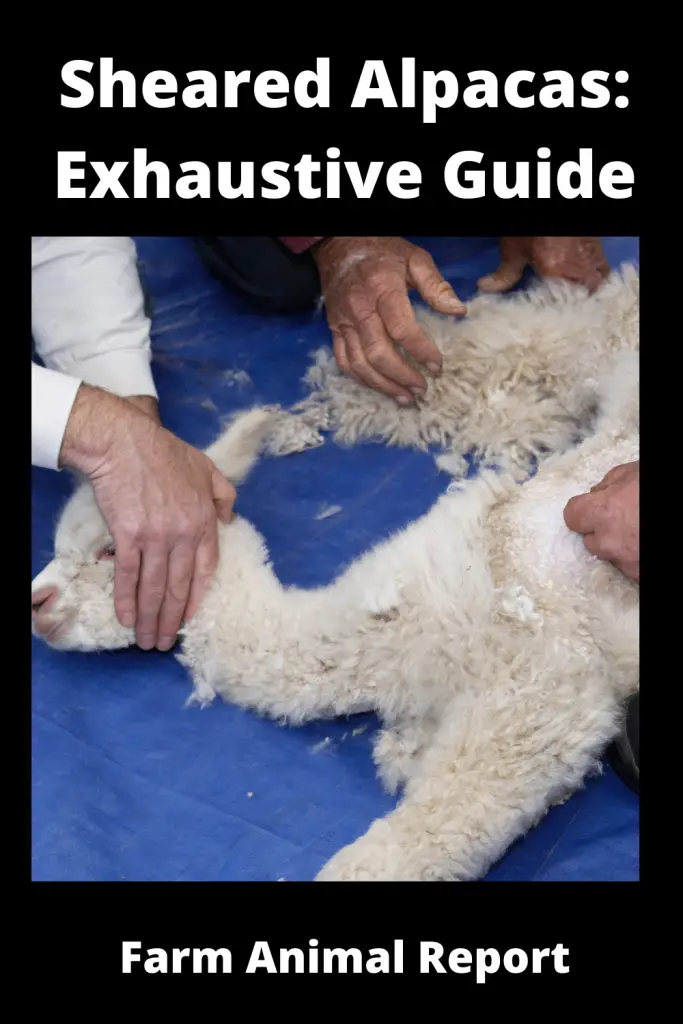
Alpaca Hairstyles
Specific individuals demonstrate their alpaca hairstyles. Most alpacas have their forelocks – the area between and in front of the ears – left long, but this is a matter of style rather than welfare. If their hair gets in the way, we trim the hair that hangs over their eyes. Specific individuals create a pompom on the animal’s bottom, which helps keep the genitals out of harm’s way. Additionally, we shear to the knee level, leaving them fluffy below the knees.
The Right Weather for Shearing
If the weather is cold, avoid shearing your animals. They probably despise the abrupt transition from warm to cold just as much as you do! Indeed, alpacas are prone to hypothermia when sheared in cold, wet, or windy weather, so if you cannot avoid it, you will need to closely monitor them and keep them warm until they adjust to being bald!
It helps to have adequate indoor facilities and bedding and coats if the weather is a little chilly. If the shearer accidentally cuts the animal’s skin, you must treat it and monitor it for infection.
Final Thought
A skilled shearer is critical due to their speed. It should take about six minutes and should cause no distress to the creatures.
Animals that are not stressed out are much easier to shear. A familiar pen, adequate lighting, and comfortable shelters contribute to a positive shearing experience for all parties involved. Additionally, your shearer, like anyone who comes into contact with farm animals, should be well versed in biosecurity. A modern disinfecting kit is an absolute necessity.


